If you have a good local farmers market nearby, then a big part of your vegetable garden plants should aim to fill in all the blanks for interesting things that you can’t easily get elsewhere. Diversity and variety are some of the great joys of growing a veggie garden, so why grow the same things you can get at the grocery store? Branch out and try new plants, weird or unusual vegetable varieties that have unique qualities, or crops that aren’t common to your region.
Breeders and seed suppliers are constantly offering improved varieties that offer all sorts of qualities. Easier growing, disease and pest resistance, and showier or tastier harvests are usually the goal. They are also always on the lookout for older or historic plants that spark our sentimentality, inspire our creativity, or are influenced by current culinary or artistic trends.
With an eye towards what is fun and exciting to gardeners – but also cooks, artists, and lovers of the fresh and novel, these are some of the lesser-known and intriguing edibles (with one bonus crafty plant -at the end) that have caught my our eye.
9 Exciting but Unusual Vegetable Garden Plants:
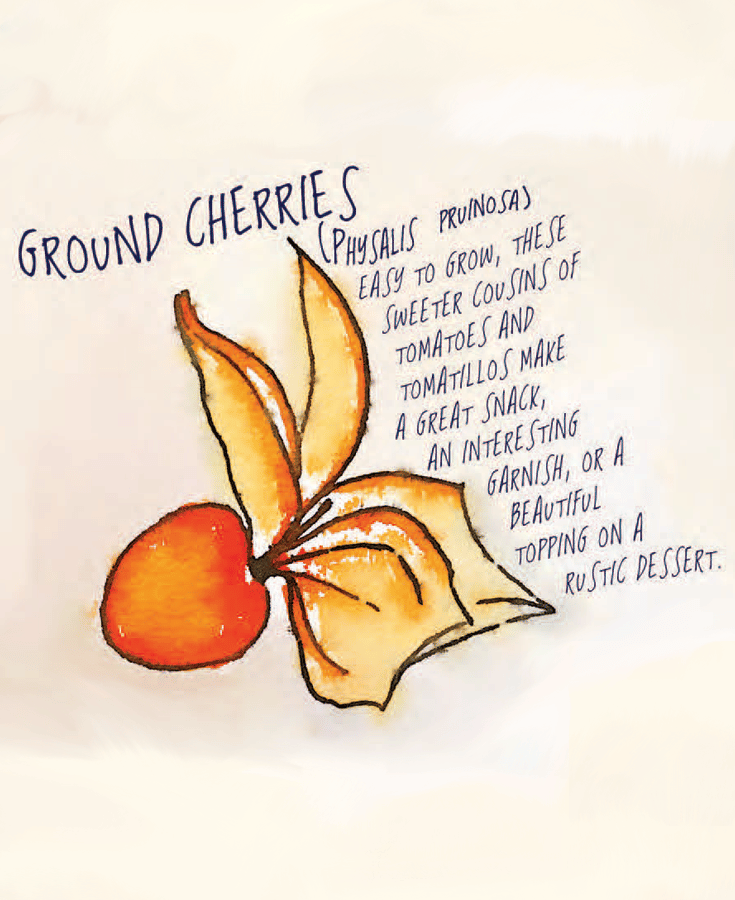
Ground Cherries – Physalis prunosa
Ground cherries are easy to grow. These sweeter cousins of tomatoes and tomatillos make a great snack, an interesting garnish or a beautiful topping on a rustic dessert. The first time I encountered one was atop a creme brûlée type treat prepared by my inventive chef friend Rachel back in my London days. She had pealed back the papery wrapping to expose the sweet orange fruit to create a mini centerpiece atop the sugary crust.
Ground cherries are edible vegetable garden plants but they are related to the inedible chinese lanterns. Chinese lanterns have similar paper sheaths and are often grown for autumn flower arrangements. Try growing them for something to spice up your fall cutting garden.
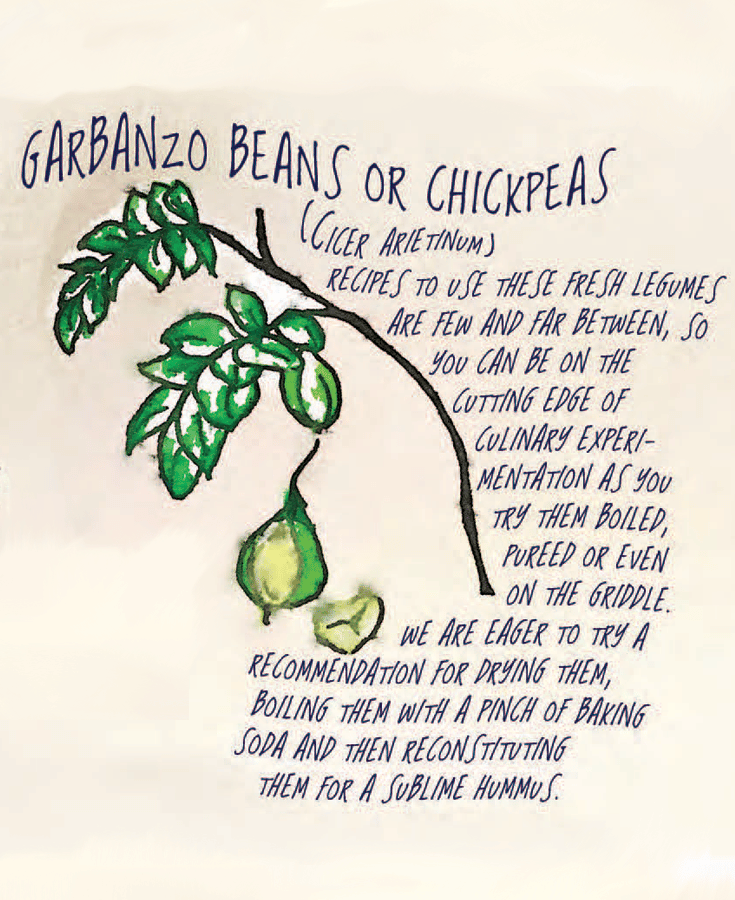
Garbanzo beans or Chickpeas – Cicer arietinum
To answer the common question -Yes, Chickpeas and Garbanzo beans are the same thing. They have been grown in the mediterranean for thousands of years. These protein filled beans are also the most important legume in Indian and Burmese cuisine.
Recipes to use these fresh legumes are few and far between. So, you can be on the cutting edge of culinary experimentation as you try them boiled, pureed, or even on the griddle.
We’re eager to try a recommendation for drying them, boiling them with a pinch of baking soda and then reconstituting them for a sublime hummus.

Glass Gem Corn -Zea Mays
Zea mays was bred by a part-Cherokee farmer in Oklahoma as a way to re-connect with his Native American heritage through some of the different and historic vegetable garden plants that his ancestors cultivated. Glass gem corn displays vibrant colors that are rare in the plant world and simply amazing when seen all at once in one ear of corn. The silk tassels serve the purpose of a flower stamen and ensure each kernel represents a unique, open-pollinated genetic makeup in a rainbow of colors.
You can also try rainbow mix corn or the very cute and so easy to decorate with strawberry popcorn corn.
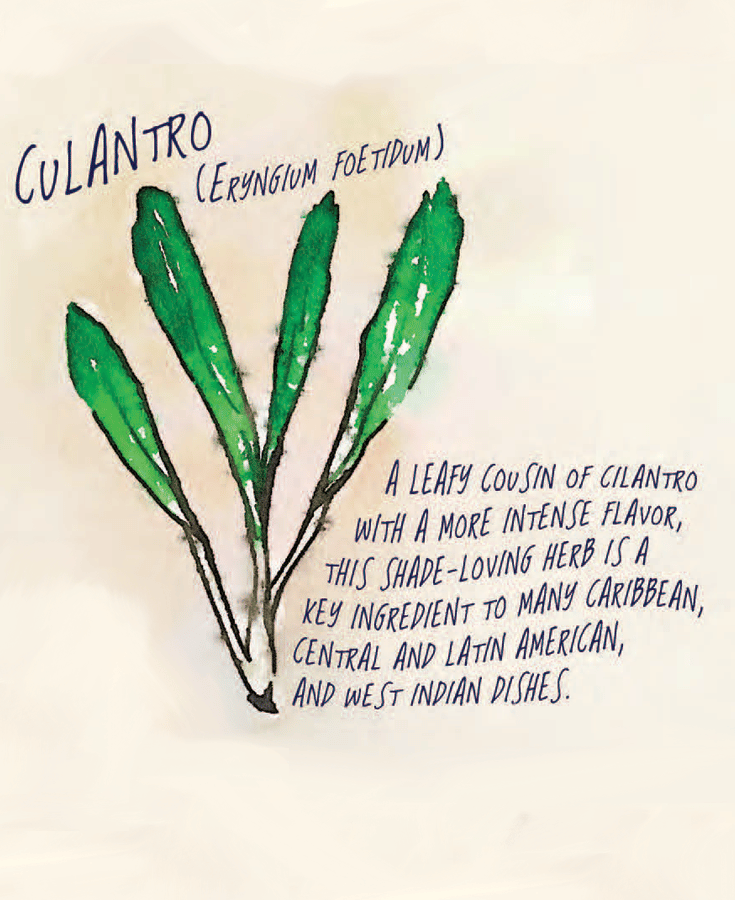
Culantro – Eryngium Foetidum
A leafy cousin of Cilantro, Culantro is a more intense flavor. It looks a little different too – with flat sword shaped leaves.
This shade loving herb is a key ingredient in many Caribbean, Central and Latin American and west Indian dishes. In warmer climates, culantro it is a biennial. In most north American zones however, it is typically grown as an annual from seed.
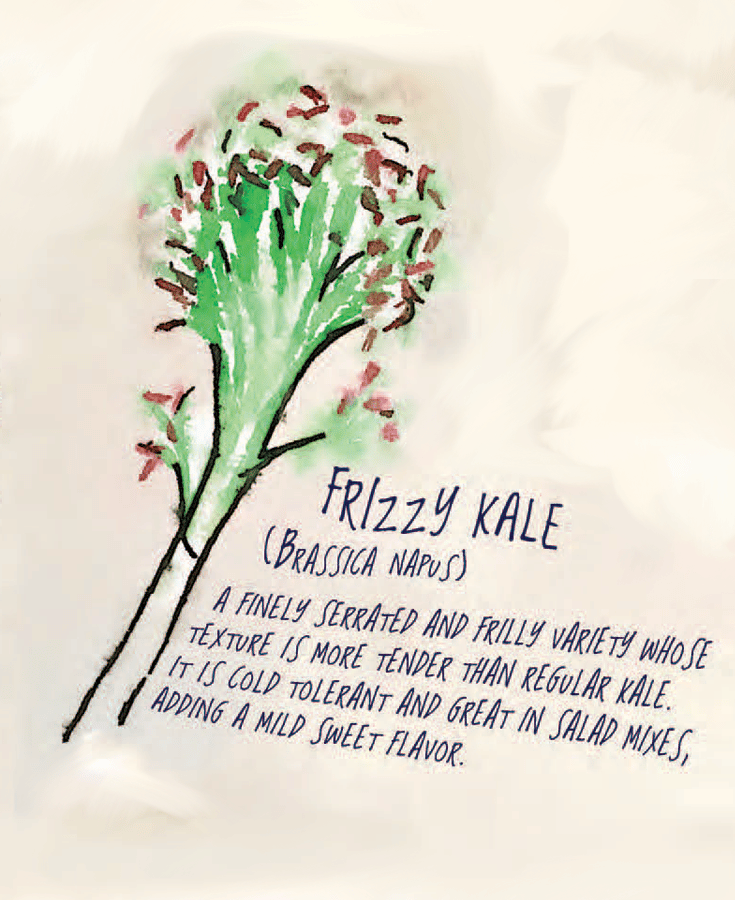
Frizzy Kale – Brassica napus
Brassica napus is a finely serrated frilly variety of kale whose texture is more tender than broad leaved kale. Look for Red ursa or Red Russian varieties. These northern varieties are extremely cold tolerant and survive in below zero (Fahrenheit) temps. You can literally harvest from beneath snow and ice. In fact, a freeze or frost makes them even sweeter and great in salad mixes.
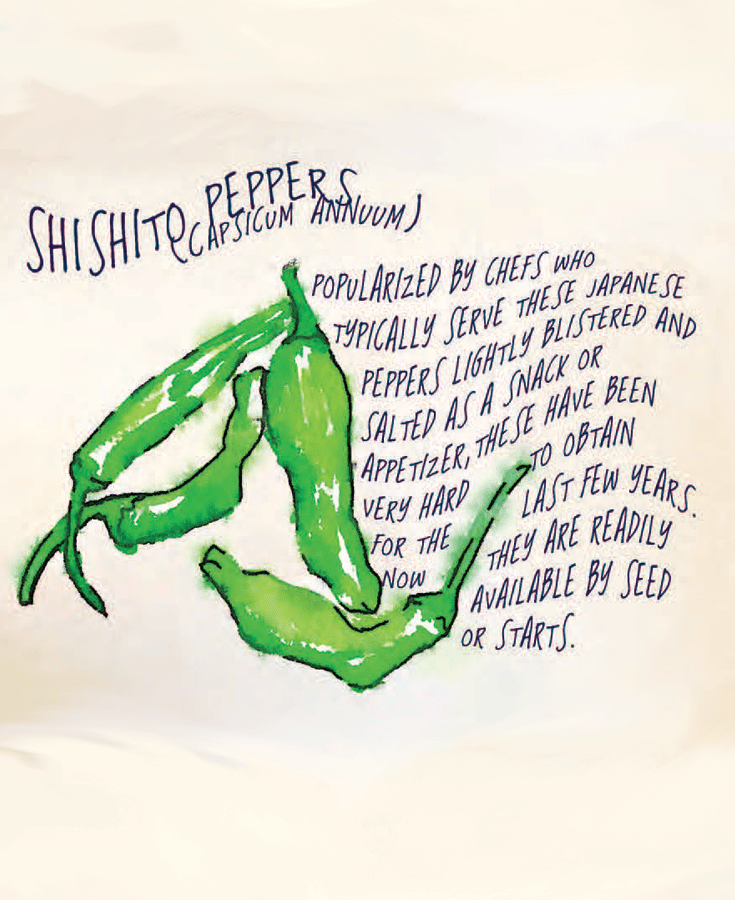
Shishito Peppers – Capsicum annuum
One of our favorite things to grow is peppers. (There are so many fun shapes, colors, sizes, and levels of heat and sweetness to try!).
Shishito are a thin skinned pepper that can sometimes look limp and wilted. But don’t let that fool you – they are very snack-able.
Popularized by chefs who typically serve these Japanese peppers lightly blistered and salted as a snack or appetizer, these have been very hard to obtain for the last few years. With their growing popularity, shishito peppers are now readily available by seed or starts.
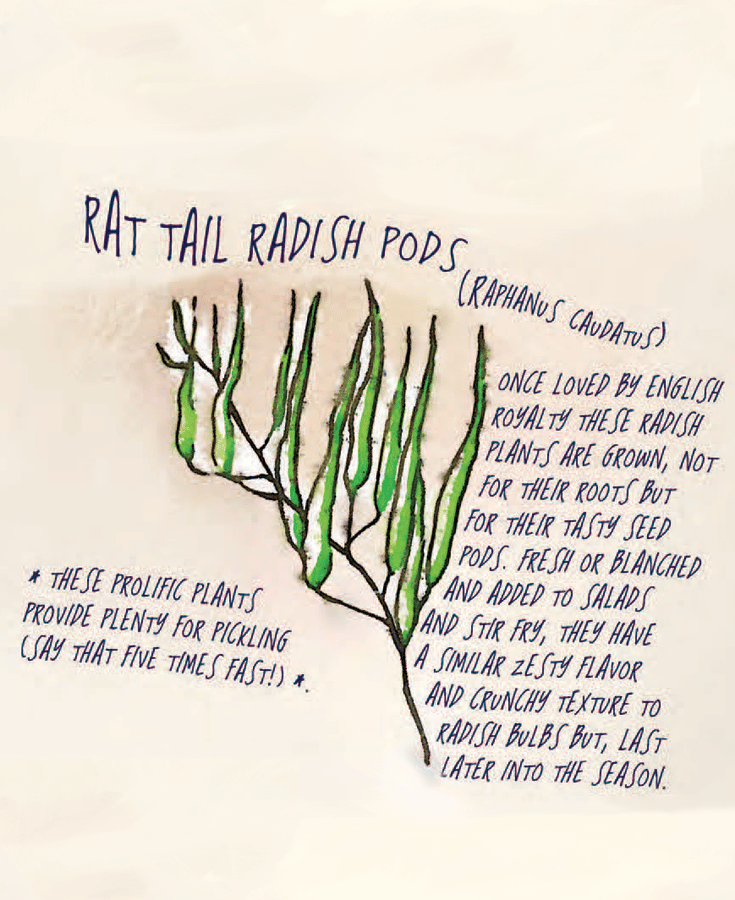
Rat Tail Radish Pods – Raphanus caudatus
Rat tail radishes have a long history and were once loved by English royalty. These radish plants are grown not for their roots but for the tasty seed pods. Rather than digging an underground bulb, you wait for a branched seed structure to develop above ground. These are the epitome of unexpected and different and just plain weird vegetables. Fresh or blanched and added to salads and stir fry, they have a similar zesty flavor and crunchy texture to radish bulbs but, last later into the season.
*These prolific plants provide plenty for pickling (say that five times fast!). But seriously – pickled Rat tail radish pods seem like an exciting garnish for a martini or bloody mary.
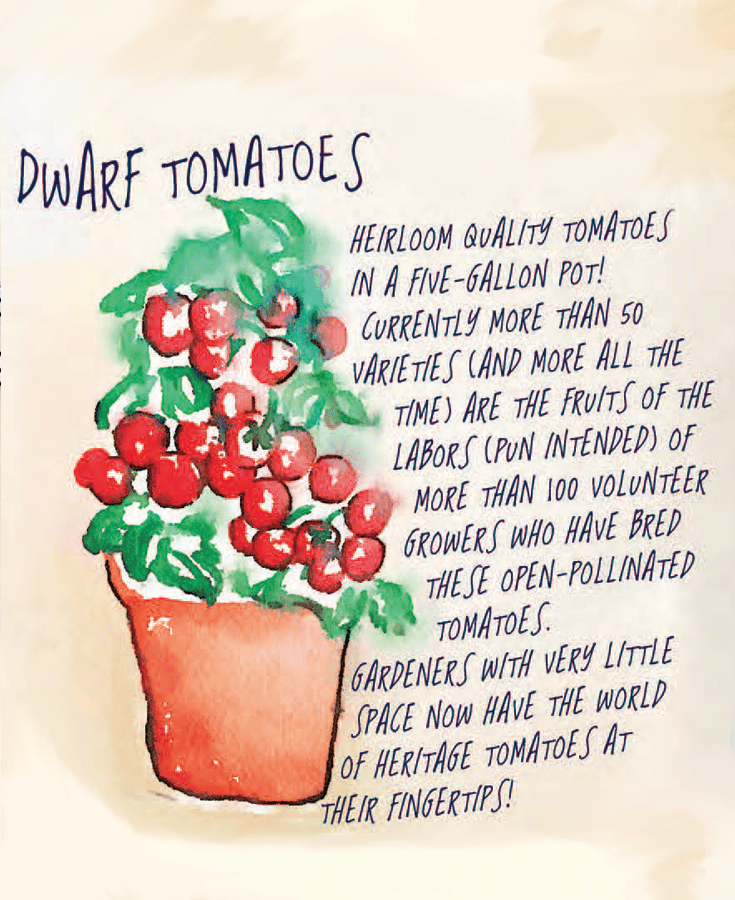
Dwarf Heirloom and Heritage Tomatoes
Heirloom quality tomatoes in a five gallon pot! Currently there are more than 50 varieties (and more all the time). These tomatoes are the fruits of the labors (pun intended) of more than 100 volunteer growers who have bred these open-pollinated tomatoes. Gardeners with very little space now have the world of heritage tomatoes at their fingertips!
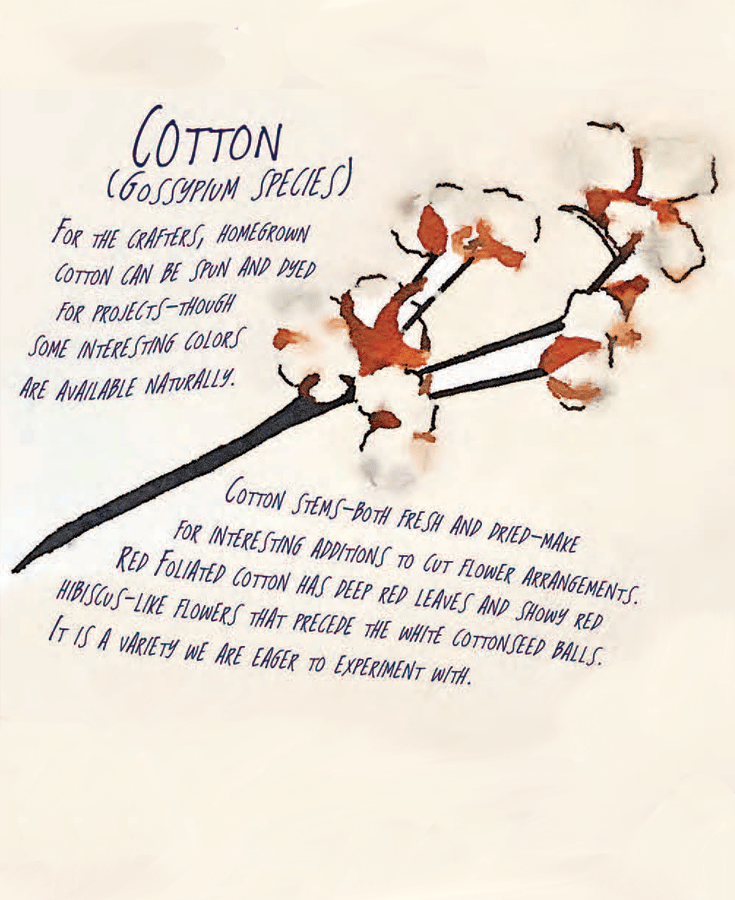
Cotton – Gossypium species
This last one isn’t actually an edible vegetable garden plant – but here more for the creative opportunities.
For the crafters, homegrown cotton (gossypium species) can be spun and dyed for projects. There are some interesting colors available naturally as well.
Cotton stems – both fresh and dried – make interesting textural and architectural additions to cut flower arrangements, too.
Red foliated cotton has deep red leaves and showy red hibiscus-like flowers that precede the white cottonseed balls. It is a variety we are eager to experiment with.
What exciting and intriguing vegetables (or other plants for your vegetable garden) are you growing to support your love of the weird vegetables – the unique and quirky? Or do you grow to craft or make art? I’m always on the hunt for exciting plant and garden inspiration, too – so feel free to share what you are planting in the comments.
+comments+